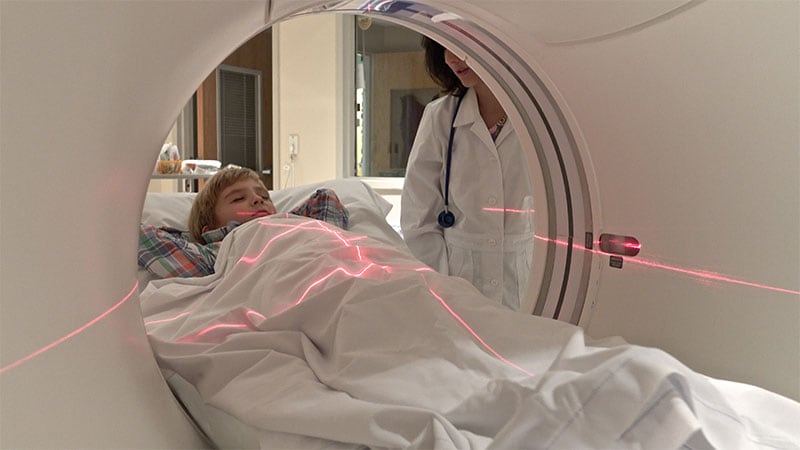Core Concepts
Repeated CT scans in childhood increase cancer risk.
Abstract
The study highlights the association between exposure to CT scans in childhood and an increased risk of certain cancers. Researchers emphasize the importance of judicious CT usage and radiation-reducing techniques to mitigate risks. The study utilized the National Health Insurance Research Database in Taiwan to identify patients with intracranial tumors, leukemia, and lymphomas. Exposure to four or more CT scans before age 18 was linked to a higher risk of cancer, with a dose-response relationship observed. The study underscores the need for radiation protection strategies and informed decision-making around radiological procedures.
Repeated CTs in Childhood Linked With Increased Cancer Risk
Stats
Exposure to four or more CT scans before age 18 is associated with more than double the risk for certain cancers.
Ninefold increased risk of intracranial tumors among children who received four or more CT scans.
Exposure to two to three CT scans associated with increased risk for intracranial tumor.
Exposure to four or more CT scans linked to increased risk for intracranial tumor, leukemia, and non-Hodgkin lymphoma.
Children exposed to four or more CT scans at or before age 6 had the highest cancer risk.
Quotes
"Our work reinforces the importance of radiation protection strategies." - Study authors
"The risk of brain cancer is more than doubled in children who undergo two or more CT scans." - Rebecca Smith-Bindman
Key Insights Distilled From
by Kate Johnson at www.medscape.com 04-26-2023
https://www.medscape.com/viewarticle/991217
Deeper Inquiries
How can healthcare providers balance the diagnostic benefits of CT scans with the associated cancer risks?
Healthcare providers can balance the diagnostic benefits of CT scans with the associated cancer risks by following certain strategies. Firstly, they should adhere to the ALARA (As Low As Reasonably Achievable) principle, which emphasizes minimizing radiation exposure during imaging procedures. This can be achieved by using alternative imaging modalities when appropriate, such as ultrasound or MRI, which do not involve ionizing radiation. Additionally, providers should carefully assess the necessity of each CT scan, ensuring that it is truly essential for the patient's diagnosis and treatment. Moreover, utilizing radiation-reducing techniques and protocols, such as adjusting the scan parameters and using lower radiation doses, can help mitigate the risks associated with CT scans while still obtaining the necessary diagnostic information.
What are the implications of underestimating the true risks of CT scans in children?
Underestimating the true risks of CT scans in children can have significant implications for their health outcomes. If the risks are underestimated, healthcare providers may not fully appreciate the potential harm that repeated CT scans can pose to pediatric patients, leading to overutilization of this imaging modality. This can result in unnecessary radiation exposure, increasing the long-term risk of developing radiation-induced cancers, such as intracranial tumors, leukemia, and lymphomas. Furthermore, underestimating the risks may lead to a lack of informed decision-making by parents and pediatric patients regarding the necessity of CT scans, potentially exposing them to avoidable harm. Therefore, accurately assessing and communicating the risks associated with CT scans in children is crucial to ensuring their safety and well-being.
How can advancements in imaging technology help reduce radiation exposure in pediatric patients?
Advancements in imaging technology can play a significant role in reducing radiation exposure in pediatric patients undergoing CT scans. One key advancement is the development of iterative reconstruction techniques, which allow for high-quality images to be obtained using lower radiation doses. By optimizing scan parameters and utilizing dose modulation techniques, such as automatic exposure control, imaging systems can tailor the radiation dose to the specific patient's size and diagnostic needs, minimizing unnecessary exposure. Additionally, the integration of artificial intelligence algorithms in CT imaging can help improve image quality and diagnostic accuracy, enabling healthcare providers to obtain the necessary information with reduced radiation doses. Furthermore, the ongoing research and innovation in low-dose CT protocols and equipment design aim to further enhance the safety of CT scans for pediatric patients, ensuring that they receive the diagnostic benefits of imaging while minimizing the associated radiation risks.
0
